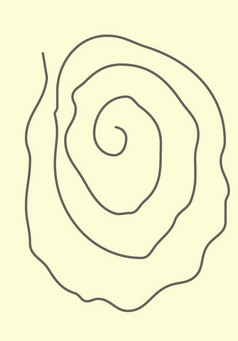Other movement disorders
There is a wide range of movement disorders other than Parkinsonism. In most cases the diagnosis is based on the clinical description of the abnormal movement. The most important of these will be discussed.
Tremors
Essential tremor
Essential tremor is a common problem, with a prevalence of 3 in 1000. It is a slowly progressive 5–8 Hz tremor that is postural and worse on action. It is usually asymmetrical, involving the hands and affecting writing and fine movements (Fig. 1). It may affect the head (yes-yes head titubation). Patients usually present later in life but have generally been aware of the tremor for many years. About 60% of patients will notice a marked improvement with small amounts of alcohol. About half the patients have a family history when the inheritance is dominant.
Other tremors
 Physiological tremor. A tremor of 8–12 Hz that is normally present but can be enhanced by anxiety, hyperthyroidism, drugs (such as beta agonists or sympathomimetics) and alcohol withdrawal.
Physiological tremor. A tremor of 8–12 Hz that is normally present but can be enhanced by anxiety, hyperthyroidism, drugs (such as beta agonists or sympathomimetics) and alcohol withdrawal.Focal dystonias
Dystonia is the involuntary co-contraction of agonist and antagonist muscles.
Cervical dystonia
This is a common condition. The involuntary contraction in the neck muscles results in:
Generalized dystonias
Wilson’s disease
The presentation is variable. Children may present with liver problems, psychiatric disturbances or a wide range of movement disorders, most notably tremor, Parkinsonism, dysarthria and incoordination. The finding of Kayser–Fleischer rings, brown corneal deposits that can be seen with a slit lamp, is said to be pathognomonic. Diagnosis depends on a low blood copper and caeruloplasmin and an elevated 24-h urinary copper.
Myoclonus
Myoclonus is the occurrence of sudden, shock-like involuntary movements. It can occur in epilepsy as a form of seizure (p. 74) and normally in association with sleep. It can occur without other neurological deficits (essential myoclonus), when it usually responds to clonazepam or sodium valproate. It is a prominent feature in postanoxic encephalopathies and some neurodegenerative diseases.














